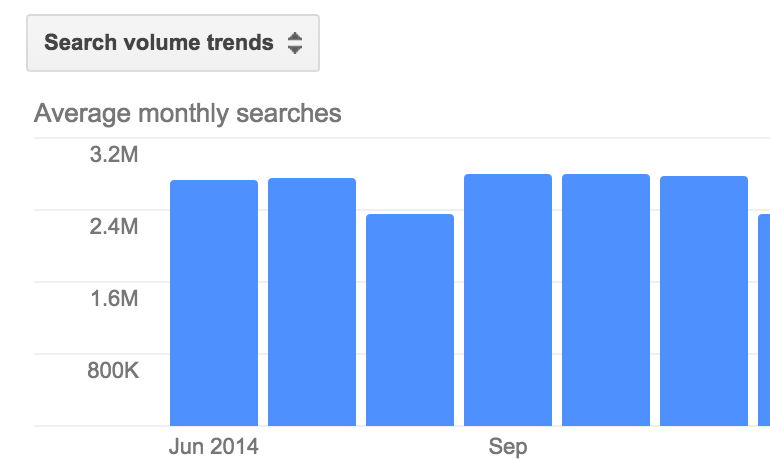There are hundreds of tasks you can complete in a PPC account. There are just as many mistakes you can make, if not more. Today we’ll focus on four mistakes regarding keywords. This is in no way a comprehensive list but gives the four most common areas that must be examined to keep an account running well.
Targeting Too Broadly
Broad match keywords are vital in finding good queries and evaluating actual search behavior. If you aren’t careful though you can reach too far. This can happen even with the best of intentions. Using the classic PPC example of +red +shoes, you would expect you get many queries about red shoes. You don’t realize right away this query could match to get “red dye out of shoes,” “red is fading from shoes,” or “when is it appropriate to wear red shoes?”
Each example mentions red shoes but neglects red shoes as a product. Informational queries are one of the most common types of queries you’ll need to filter out. It isn’t as simple as setting “information” or “learn about” as negatives. Anyone who has spent any time in a search term report knows you never really know what will pop up until you see it yourself.
Poor Negative Strategy
A poor negative keyword strategy leads to shifting the poor quality traffic rather than eliminating it. When building out your negatives, you must consider where the traffic should go.
Think of it as funneling your queries rather than simply excluding. For example, you may block a query in an ad group or campaign, only for it to pop up somewhere else. This leads to constant firefighting at the expense of long-term account health.
There are two ways you can approach this. One is looking at your negative keywords and wondering how they apply to other ad groups and campaigns. Are certain themes incompatible with your business? Consider a shared negative list. Lists allow you to quickly apply to multiple campaigns and easily scale over time.
You may also use pivot tables to guide your negative keyword implementation. One method is using tables to aggregate queries across campaigns to get an idea of how certain themes perform across larger swathes of the account. This involves building a table and counting the number of ad groups and campaigns triggered by a specific query. If you see a query popping up in multiple ad groups and campaigns, you’ll be able to adjust and funnel that query to the most relevant ad groups, ensuring this user sees the correct ad and ends up on the most relevant landing page.
Not Looking At Aggregates
This aspect is completely situational and requires additional insight beyond the metrics. The negative strategy section mentioned looking at potential negatives across the account. The same goes for your positive keywords. The aggregate numbers can tell a story that the individual keywords don’t.
This is why many account managers prefer highly specific ad group and campaign structures. By keeping keywords in defined groups, this analysis is much easier.
Rather than just evaluate the performance of “red shoe” related terms, you can examine how modifiers impact performance across all shoes. Do queries and keywords looking for cheap shoes do better or worse than the average?
One aspect of analysis requires that you align these with your business. For example, a user searching for great deals on shoes won’t necessarily see the value in a boutique fashion shop. It’s often not so clear-cut in reality. Cheap is a subjective term so it is worth evaluating the data.
Evaluating these modifying terms allows you to better grasp user behavior as well. Often times we try and fit accounts to a website, but the reverse is also true. By examining your productive terms, you can better adjust to user behavior and alter copy or landing pages accordingly. Sometimes poor performance isn’t indicative of the keyword as much as everything else around it.
Leaving Keywords Running for Too Long
Even keywords that seemed relevant at the start can overstay their welcome. This comes in multiple forms. One is overspending without meeting performance goals. The second is lingering keywords with middling to poor performance and the final one is keywords with little or no traffic.
The first group is easy enough to evaluate. Some keywords drive a lot of traffic but don’t drive conversions. These keywords could to too broad, not reflect actual search intentions, or simply be mismatched in terms of ad copy or landing pages.
You should always keep an eye on your keywords and have a point at which you assess performance. This could be when you are spending at four times your CPA goal, after 100 clicks, or a combination of the two. There is no perfect formula, but having a decision process keeps you from erring on the side of “it might work someday so we’ll hold out a little longer” and making the problem worse over time.
The second group is very similar to the first but lacks the immediate red flags of high spend. These are the keywords that perform poorly over time but have a limited amount of traffic. They are never large enough issues to address directly but over time lead to efficiency leaks. The best way to combat this is to view performance over longer date ranges. Even if a keyword only spends $45/month, if it hasn’t converted in 3 months, it might be worth cutting.
The final group is made up of keywords with little to no traffic. While they don’t hurt your account, they aren’t’ doing much either. By periodically pruning these keywords, you’ll not only clean up the clutter but be able to focus on the parts of the account that drive results.




